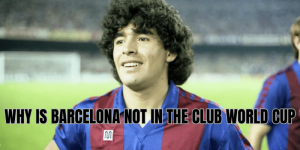In short: no, the FIFA Club World Cup does not use a second leg format. Every match—from group stage through to the knockout rounds—is played as a single-leg tie. SantaKick will walk you through the current format, history, and the reasons why this structure has been adopted.
What Is The Current Format Of The Club World Cup

The 2025 FIFA Club World Cup has ushered in a new expanded format featuring 32 clubs.
Here are the key points:
- There are 8 groups of 4 teams. Each team plays every other once (single round-robin).
- The top two teams in each group advance to the Round of 16.
- Knockout phase matches (Round of 16, Quarterfinals, Semifinals, Final) are single-leg ties, not home-and-away fixtures. If teams are level after 90 minutes, extra time and penalties decide the winner.
So at no point in the schedule is there a first leg and second leg between the same two teams.
Why There Isn’t A Second Leg In Club World Cup Matches

Understanding why the single-leg format is used gives insight into scheduling, fairness, and logistics:
- Tournament duration and congested calendar: With 32 teams and many matches crammed into a few weeks, playing home-and-away (i.e., two legs) would massively extend the length of the tournament.
- Neutral or host-nation stadiums: The tournament is held in one (or a few) host country(ies). Matches take place in designated stadiums, not tied to home grounds of participating clubs. This naturally aligns with single-leg matches.
- Reducing travel and complexity: Two-leg fixtures would require more travel, more logistics, and more cost—especially with clubs. Single-leg matches keep the structure simpler.
- Excitement and clarity: Single-match knockouts raise the stakes—no second chances. For fans, this offers a dramatic, winner-takes-all feel. It’s also easier to follow and market.
Historical Context: Has There Ever Been “Two Legs” in the Club World Cup?

Historically, the Club World Cup has always used single-match ties. Even before the 2025 format expansion:
- The tournament typically involved fewer teams. Matches were played in one location or host country.
- Knockout rounds were one-off games—no aggregate scoring over two matches.
- There was no standard “home-and-away” tie in the sense used in many continental or league cup competitions.
So the absence of a second leg is consistent with how the competition has largely operated.
What Happens If A Match Ends In a Draw
Since there is no second leg, ties must be resolved in the same match. The procedure is:
- 90 minutes of regular time.
- If still tied, extra time (two halves of 15 minutes each).
- If still tied after extra time, a penalty shoot-out determines the winner.
This format ensures every match produces a winner when one is needed (in knockout rounds).
Comparison With Other Club Competitions
To help clarify, compare with formats in other tournaments:
| Competition | Two-leg Ties Used | Single-leg or Neutral Venue Ties |
| UEFA Champions League knockout rounds | Yes (home & away) | No |
| Copa Libertadores (earlier rounds) | Yes | No |
| Domestic cups / League Cups | Mixed (sometimes two legs, sometimes single) | Single in finals or certain rounds |
| Club World Cup | No | Always single-leg |
This reinforces how the Club World Cup is distinct: it is more like the FIFA World Cup or European Championships in its knockout phase structure.
Conclusion
In conclusion, do Club World Cup have second leg? SantaKick thinks no—they do not. Every phase is handled with single-leg fixtures,, or player performance—just say the word!






